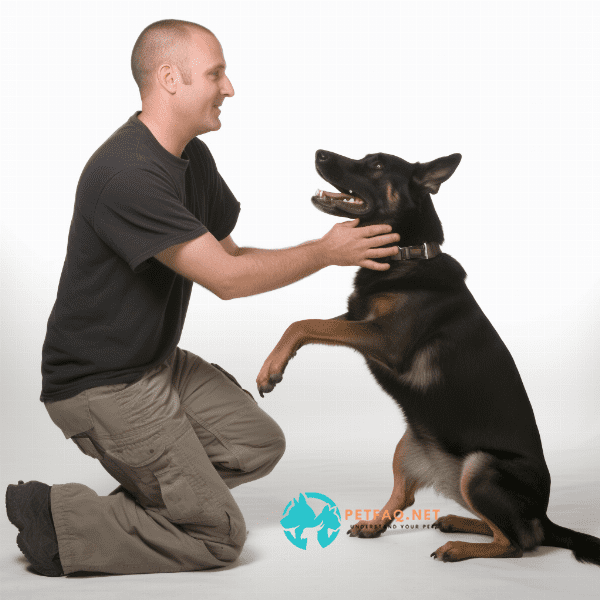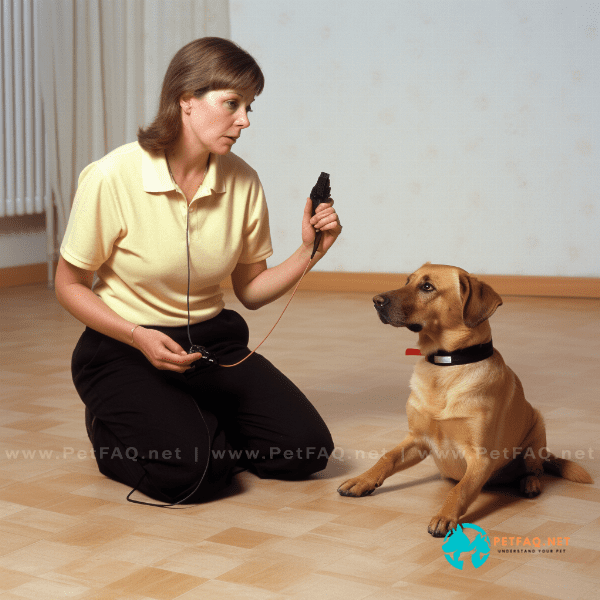Table of Contents
- Understanding Your Dog’s Behavior
- Setting Up Your Home for Successful House Training
- Creating a Consistent Feeding and Potty Schedule
- Positive Reinforcement Techniques for Encouraging Good Behavior
- Dealing with Accidents: Cleaning and Prevention Strategies
- Overcoming Challenges: Separation Anxiety, Fear, and Aggression
- Patience and Persistence: Staying Committed to the Process
- Maintaining Good Habits: Long-Term House Training Tips
- Troubleshooting Common House Training Problems
- Celebrating Success: Enjoying Life with Your Well-Trained Dog
Understanding Your Dog’s Behavior
Understanding your dog’s behavior is crucial when it comes to House training a dog. By understanding why your dog behaves the way they do, you can tailor your training approach to meet their individual needs. Here are some important factors to keep in mind:
Dogs are creatures of habit
Dogs thrive on routine and consistency. They like to know what to expect and when to expect it. This is why setting up a consistent feeding and potty schedule is so important for house training a dog. By establishing a routine, your dog will learn when it’s time to eat, play, and go outside to do their business.
Dogs communicate through body language
Dogs communicate through their body language, and it’s important to learn to read their signals. For example, if your dog is sniffing around and circling in one spot, it’s a sign that they need to go potty. If they’re pacing back and forth or whining, they may be feeling anxious or restless.
Positive reinforcement is key
Positive reinforcement is a powerful tool for house training a dog. When your dog does something you want them to do, such as going potty outside, reward them with treats, praise, and affection. This helps them associate good behavior with positive outcomes, making them more likely to repeat that behavior in the future.
The importance of patience
House training a dog takes time and patience. Dogs don’t learn overnight, and it’s important to be patient with them as they learn new behaviors. Celebrate small victories and stay committed to the process. With consistency and patience, your dog will learn the behaviors you want them to exhibit, and house training will become a success.

Setting Up Your Home for Successful House Training
Setting up your home for successful house training is an essential step in the process. Here are some tips to create an environment that promotes good behavior:
Designate a specific potty area
Designating a specific potty area for your dog is an important step in house training a dog. Choose an area in your yard that is easily accessible and away from high-traffic areas. Use a specific command, such as “go potty,” to signal to your dog that it’s time to go to the designated area.
Create a safe and comfortable space
Creating a safe and comfortable space for your dog is crucial when house training a dog. Dogs need a space they can call their own, where they can relax and feel secure. Provide a comfortable bed, toys, and water in their designated space. This will help them feel calm and reduce their anxiety.
Use baby gates to limit access
Using baby gates to limit your dog’s access to certain areas of your home can help prevent accidents and reduce the risk of destructive behavior. Start by limiting access to areas where your dog is most likely to have accidents, such as carpeted rooms or bedrooms. Gradually increase their access as they become more reliable in their potty training.
Keep cleaning supplies on hand
Accidents will happen when house training a dog, so it’s important to keep cleaning supplies on hand to clean up messes immediately. Use an enzymatic cleaner to remove any odors, which can help prevent your dog from returning to the same spot to do their business.
Remove any potential hazards
Remove any potential hazards from your home that could be dangerous for your dog. Keep toxic substances, such as cleaning supplies and medications, out of reach. Secure loose wires and cables, and put away any small objects that your dog could choke on.
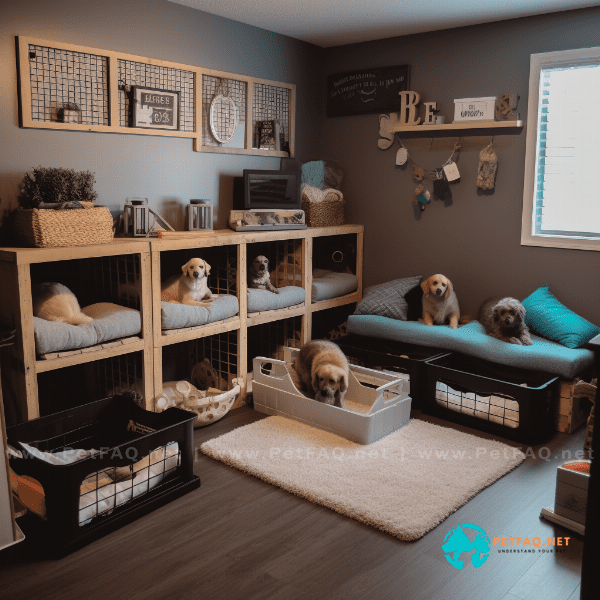
Creating a Consistent Feeding and Potty Schedule
Creating a consistent feeding and potty schedule is a key component of house training a dog. Here are some tips to help you establish a routine:
Determine the right feeding schedule
Determining the right feeding schedule for your dog is essential when house training a dog. Puppies may need to eat more frequently, while adult dogs may only need to eat twice a day. Consult with your veterinarian to determine the best feeding schedule for your dog’s age, breed, and activity level.
Establish a regular potty routine
Establishing a regular potty routine is crucial for house training a dog. Take your dog out to their designated potty area at regular intervals throughout the day, such as first thing in the morning, after meals, and before bedtime. Use a specific command, such as “go potty,” to signal to your dog that it’s time to do their business.
Supervise your dog’s meals and potty breaks
Supervising your dog’s meals and potty breaks is important when house training a dog. Keep an eye on your dog after meals, as they will typically need to go potty within 15-20 minutes. Be patient and wait for your dog to finish their business before returning inside.
Limit water intake before bedtime
Limiting your dog’s water intake before bedtime can help prevent accidents during the night. Be sure to provide plenty of water throughout the day, but consider cutting off access to water about two hours before bedtime.
Be consistent with the schedule

Positive Reinforcement Techniques for Encouraging Good Behavior
Positive reinforcement is a powerful tool for house training a dog. By rewarding your dog for good behavior, you can encourage them to repeat those behaviors in the future. Here are some positive reinforcement techniques to try:
Use treats as rewards
Treats are a great way to reward your dog for good behavior when house training a dog. Choose small, soft treats that your dog can easily chew and swallow. Give the treat immediately after your dog exhibits the desired behavior, such as going potty outside or coming when called.
Use praise and affection
Praise and affection are powerful rewards for dogs when house training a dog. Use a happy, upbeat tone of voice to let your dog know when they’ve done something good. Petting, cuddling, and belly rubs are great ways to show your dog affection and reinforce good behavior.
Use clicker training
Clicker training is a popular positive reinforcement technique used in house training a dog. The clicker is a small device that makes a clicking sound when pressed. Use the clicker to signal to your dog that they’ve done something good, and follow it up with a treat or praise.
Use positive body language
Positive body language is an important part of positive reinforcement when house training a dog. Use an upbeat tone of voice, smile, and make eye contact with your dog when rewarding them for good behavior. This helps reinforce the positive association with good behavior.
Avoid punishment
Punishing your dog for bad behavior is not an effective way to house train a dog. Instead, focus on rewarding good behavior and ignoring bad behavior. If your dog has an accident, clean it up immediately and move on. Avoid scolding or punishing your dog, as this can make them fearful and anxious.

Dealing with Accidents: Cleaning and Prevention Strategies
Accidents will happen when house training a dog, but it’s important to deal with them promptly and prevent future incidents. Here are some strategies for dealing with accidents:
Clean up accidents immediately
Cleaning up accidents immediately is crucial when house training a dog. Use an enzymatic cleaner to remove any odors and stains. Avoid using cleaners with ammonia or bleach, as these can actually attract your dog to the same spot to do their business.
Prevent access to accident-prone areas
Preventing access to accident-prone areas can help reduce the risk of accidents when house training a dog. Use baby gates or close doors to keep your dog away from areas where they’ve had accidents in the past. Gradually increase their access to these areas as they become more reliable in their potty training.
Increase potty breaks
Increasing the frequency of potty breaks can help prevent accidents when house training a dog. Take your dog outside to their designated potty area more frequently, especially after meals or when your dog has been inactive for a while.
Be patient and consistent
House training a dog takes time and patience. Be patient and consistent with your training approach, and celebrate small victories along the way. Remember that accidents will happen, and focus on preventing future incidents rather than dwelling on past mistakes.
By dealing with accidents promptly and implementing prevention strategies, you can reduce the risk of accidents when house training a dog. With patience and persistence, your dog will learn the behaviors you want them to exhibit, and house training a dog will become a success.

Overcoming Challenges: Separation Anxiety, Fear, and Aggression
House training a dog can be challenging when your furry friend exhibits separation anxiety, fear, or aggression. Here are some strategies for overcoming these challenges:
Separation anxiety
Separation anxiety is a common issue when house training a dog. To reduce anxiety, gradually acclimate your dog to being alone by leaving for short periods and gradually increasing the time. Provide toys, treats, and a comfortable space for your dog to relax while you’re away. Consider using a calming pheromone spray or diffuser to help reduce anxiety.
Fear
Fear can make house training a dog a challenge. To help your dog overcome fear, slowly introduce them to new experiences and environments, such as meeting new people or going to new places. Use positive reinforcement techniques to encourage good behavior, and avoid punishing or scaring your dog, as this can worsen fear.
Seek professional help
If you’re having difficulty house training a dog due to separation anxiety, fear, or aggression, seek the help of a professional dog trainer or behaviorist. They can provide guidance and support to help you and your dog overcome these challenges.
By using these strategies, you can overcome challenges and make house training a dog a positive and rewarding experience for both you and your furry friend.
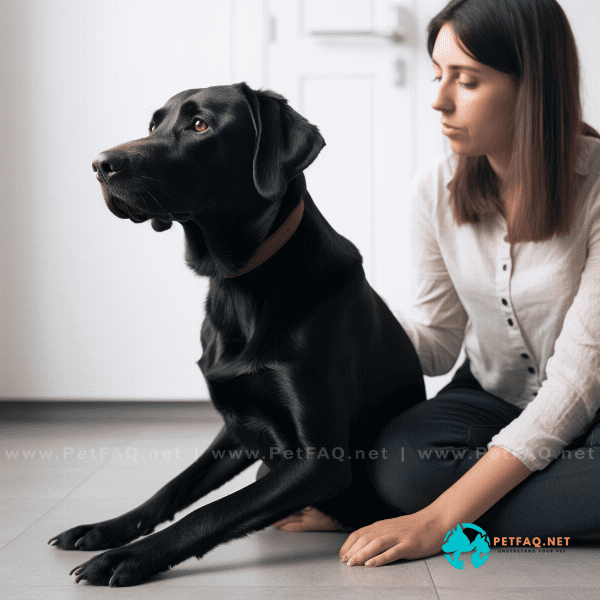
Patience and Persistence: Staying Committed to the Process
House training a dog can be a challenging process that requires patience and persistence. Here are some tips for staying committed to the process:
Set realistic expectations
Set realistic expectations when house training a dog. Understand that accidents will happen and that it may take several weeks or even months for your dog to fully grasp the concept. Celebrate small victories and focus on progress, rather than perfection.
Stay consistent
Consistency is key when house training a dog. Stick to a regular feeding and potty schedule, use the same commands, and reward good behavior consistently. This will help your dog understand what is expected of them and make the training process more efficient.
Be patient
Patience is essential when house training a dog. Understand that your furry friend is learning new behaviors, and that it takes time and repetition for those behaviors to become habits. Avoid punishing or scaring your dog, as this can hinder the training process.
Stay positive
Staying positive is important when house training a dog. Use positive reinforcement techniques to encourage good behavior, and avoid dwelling on mistakes or accidents. Celebrate small victories and focus on progress, rather than setbacks.
Seek support
Seek support when house training a dog. Join online forums or local groups of dog owners to share experiences and seek advice. Consider enrolling in a training class with your dog to receive professional guidance and support.
By staying committed to the process and using these tips, you can make house training a dog a positive and rewarding experience for both you and your furry friend. Remember that patience and persistence are key, and that with time and effort, your dog will learn the behaviors you want them to exhibit.
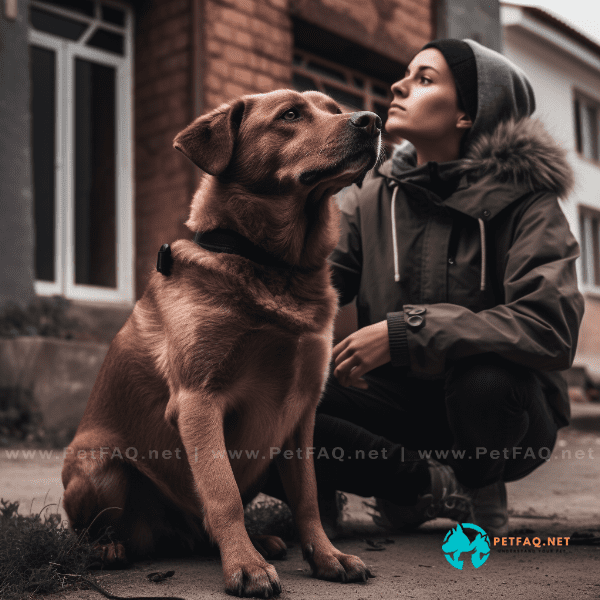
Maintaining Good Habits: Long-Term House Training Tips
Maintaining good habits is crucial when it comes to long-term house training a dog. Here are some tips for keeping your dog’s behavior consistent:
Use positive reinforcement
Continue to use positive reinforcement techniques when house training a dog. Use treats, praise, and affection to reward good behavior and encourage your dog to repeat those behaviors in the future.
Gradually increase freedom
Gradually increase your dog’s freedom around the house as they become more reliable in their potty training. Use baby gates or close doors to keep your dog away from accident-prone areas, and gradually increase their access to these areas as they demonstrate good behavior.
Avoid reinforcing bad behavior
Avoid reinforcing bad behavior when house training a dog. Ignore bad behavior, and avoid scolding or punishing your dog, as this can make them fearful and anxious. Instead, focus on rewarding good behavior and preventing future accidents.
By following these tips, you can maintain good habits and make long-term house training a success. Remember to stay patient, consistent, and positive, and celebrate small victories along the way. With time and effort, your dog will learn the behaviors you want them to exhibit, and house training a dog will become a rewarding and enjoyable experience.
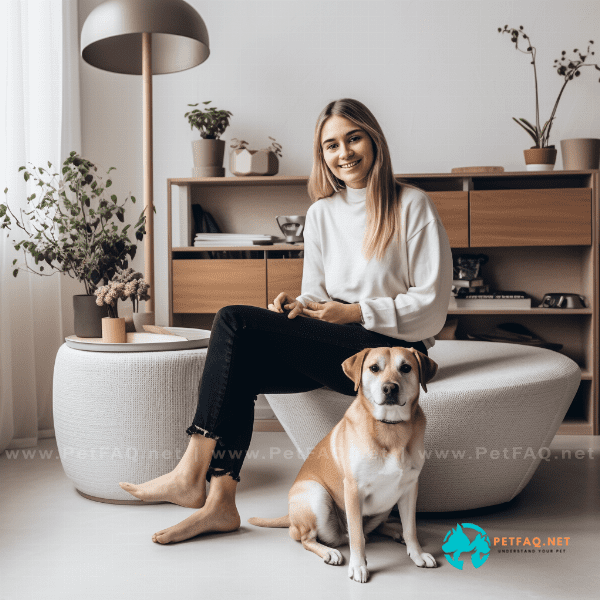
Troubleshooting Common House Training Problems
House training a dog can be challenging, and there are some common problems that dog owners may encounter along the way. Here are some tips for troubleshooting these issues:
Problem: Your dog is having accidents inside the house
Solution: Review your feeding and potty routine to ensure that you’re taking your dog outside frequently enough. Increase the frequency of potty breaks, especially after meals or when your dog has been inactive for a while. Monitor your dog’s behavior for signs that they need to go potty, and take them outside immediately. Clean up accidents promptly with an enzymatic cleaner to remove odors and stains.
Problem: Your dog is exhibiting destructive behavior
Solution: Destructive behavior may be a sign that your dog is not getting enough exercise or mental stimulation. Ensure that your dog is getting enough physical activity and playtime, and provide them with puzzle toys or other mentally stimulating activities. Avoid leaving your dog alone for extended periods of time, as this can lead to boredom and destructive behavior.
Problem: Your dog is exhibiting fear or aggression
Solution: Fear or aggression may require the help of a professional dog trainer or behaviorist. Seek their guidance to address these issues, and avoid punishing or scaring your dog, as this can worsen fear or aggression. Use positive reinforcement techniques to encourage good behavior, and gradually introduce your dog to new experiences and environments in a controlled and safe manner.
Problem: Your dog is not responding to your commands
Solution: Review your training approach to ensure that you’re using consistent commands and positive reinforcement techniques. Avoid using punishment or scolding, as this can make your dog fearful and anxious. Seek the help of a professional dog trainer if your dog is not responding to your commands.
By troubleshooting common house training problems and seeking support when necessary, you can overcome challenges and make house training a dog a positive and rewarding experience for both you and your furry friend. Remember to stay patient, consistent, and positive, and celebrate small victories along the way.

Celebrating Success: Enjoying Life with Your Well-Trained Dog
House training a dog takes time, effort, and patience, but the end result is a well-trained dog who is a joy to be around. Here are some tips for enjoying life with your furry friend:
Spend quality time together
Spend quality time with your well-trained dog, whether it’s going for walks, playing fetch, or simply relaxing together. Enjoy the companionship and bond that you’ve developed through the house training process.
Continue training
Continue training your dog to learn new commands and behaviors. This will keep their minds active and engaged, and help them continue to develop good habits.
Maintain a routine
Maintain a routine for feeding and potty breaks, even after your dog is fully house trained. This will help your dog maintain good habits and reduce the risk of accidents.
Reward good behavior
Continue to reward good behavior with treats, praise, and affection. This will reinforce the behaviors that you want your dog to exhibit, and encourage them to repeat those behaviors in the future.
Enjoy the benefits
Enjoy the benefits of a well-trained dog, such as increased freedom around the house and fewer accidents. Celebrate the success that you’ve achieved through the house training process, and continue to maintain good habits and positive reinforcement techniques.
By celebrating success and enjoying life with your well-trained dog, you can make the most of the bond and companionship that you’ve developed through the house training process. Remember to stay patient, consistent, and positive, and continue to use the techniques and strategies that you’ve learned to maintain good habits and behavior.

Frequently Asked Questions (FAQs) about House training a dog:
1. How can you help a rescue dog that may not have had previous house training?2. What should you do if your dog has an accident in the house?
3. How can you reinforce good house training behavior in your dog?
4. Are there any specific breeds or ages of dogs that are easier or harder to house train?
5. What is house training, and why is it important for dogs?

